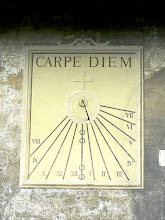LA FRANCE PROFONDE





FOTOS : (Kamakura Print Collection)
Azay-la-Rideau
Chenonceau
Chambord
Lavardin
Leonard's Boats
LA FRANCE PROFONDE
__________________
The Loire is the last wild river in Europe, flowing unimpeded from the Alps to the Atlantic.
Yet it’s not completely wild. Levees built in the Middle Ages keep the Loire within bounds, without which it would spread out as it once did throughout the entire valley. The levees are now topped with roads, and with grass covering the sides there is no sign of this ancient flood control project.
Imagine the countryside without the levees, and it becomes one grand estuary, with the river wandering and changing course every few years.
The Loire Valley and the Touraine are the historical center of France and the home of its royalty.
Azay-le-Rideau
Chenonceau
Chambord
___________
Kings and dukes, counts beyond counting, and numerous lesser lords built dozens of chateaus here. These started out as forts and evolved into pleasure-palaces, such as Azay-le-Rideau.
Renaissance chateaus such as Chenonceau with its ballroom-gallery built onto a bridge over the Cher, and Chambord — ostensibly a hunting lodge — with its dizzying array of roof-designs and Escher-like double-spiral
Chambord's staircase, completely discarded the austerities of the previous era.
Such excesses eventually enraged the people who were taxed to support these follies. Nothing is left of the chateau built by the much-unloved Cardinal Richelieu, its stones taken and used for more plebian constructions. All that remains is a large park and his ‘ideal city’ which resembles a prison. Other chateaus fell in war, occasionally leaving splendid ruins like the one at Lavardin.
Lavardin
_________
Still others decayed through weathering and neglect, like Lavardin.
The real wonder is not that so many chateaus have survived, but that so many have been maintained in a condition suitable for visitors.
This is due to an ingenious French institution known as the Compagnons du Devoir, a guild whose members have completed a series of apprenticeships in the traditional building techniques.
Once certified, they are assured of work for life: Whether the treausres of national patrimony are in public or private hands, proprietors must employ members of this guild, usually at premium rates, to do all the restoration.
The Most Beautiful Villages in France Association
-------------------------------------------------
Villages announcing themselves as the most beautiful in France invite skepticism — who decides such things?
The designation is surprisingly accurate, though, as a visit to the village of Lavardin confirms.
The village is graced by a splendid ruin, a Romanesque church, numerous cave houses (’maisons troglydytes’), and the banks of Le Loir (not to be confused with La Loire, nearby).
L’Association Les Plus Beaux Villages de France was started in 1981 by Charles Ceyrac, Mayor of Collonge-la-Rouge.
As of 2010, the list includes 152 villages in 21 regions and 66 Departments of France.
The judging is done by elected officials and partner companies, based on local history, patrimony, architeectural quality, urbanity, environmental quality, the inhabitants’ savoir-faire in the art of living, and absence of theme parks and similar distractions.
To qualify, the village must have at least two officially protected sites and agree to enter the Association by means of a local council decision.
The selected villages are also subject to continued review and de-classification. More info here.
LEONARDO'S BOATS
(Da Vinci and Mick Jagger in AMBOISE)
_____________________________________
What do Leonardo da Vinci and Mick Jagger have in common?
They have both lived in Amboise.
Leonardo da Vinci spent the last three years of his life in Clos Lucé, within sight of the chateau of his friend and patron King Francois 1st.
There da Vinci continued his drawings and studies of everything from plant life to flying machines to principles of landscape.
The Clos Lucé has working models of da Vinci’s inventions, including these pedal-driven double-paddlewheel boats for river transport.
All of da Vinci’s inventions of course consume no electricity, and might profitably be used today, as electricity costs keep rising.
Mick Jagger is (incredibly) about as old now as da Vinci was in his days at Amboise.
Perhaps they’d enjoy comparing croissants at a neighborhood cafe.
==============================


0 Comments:
Post a Comment
<< Home